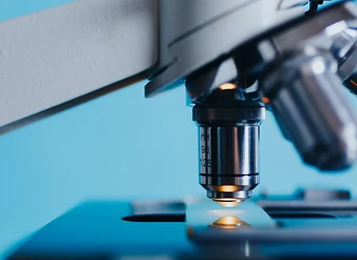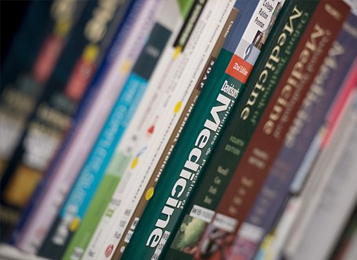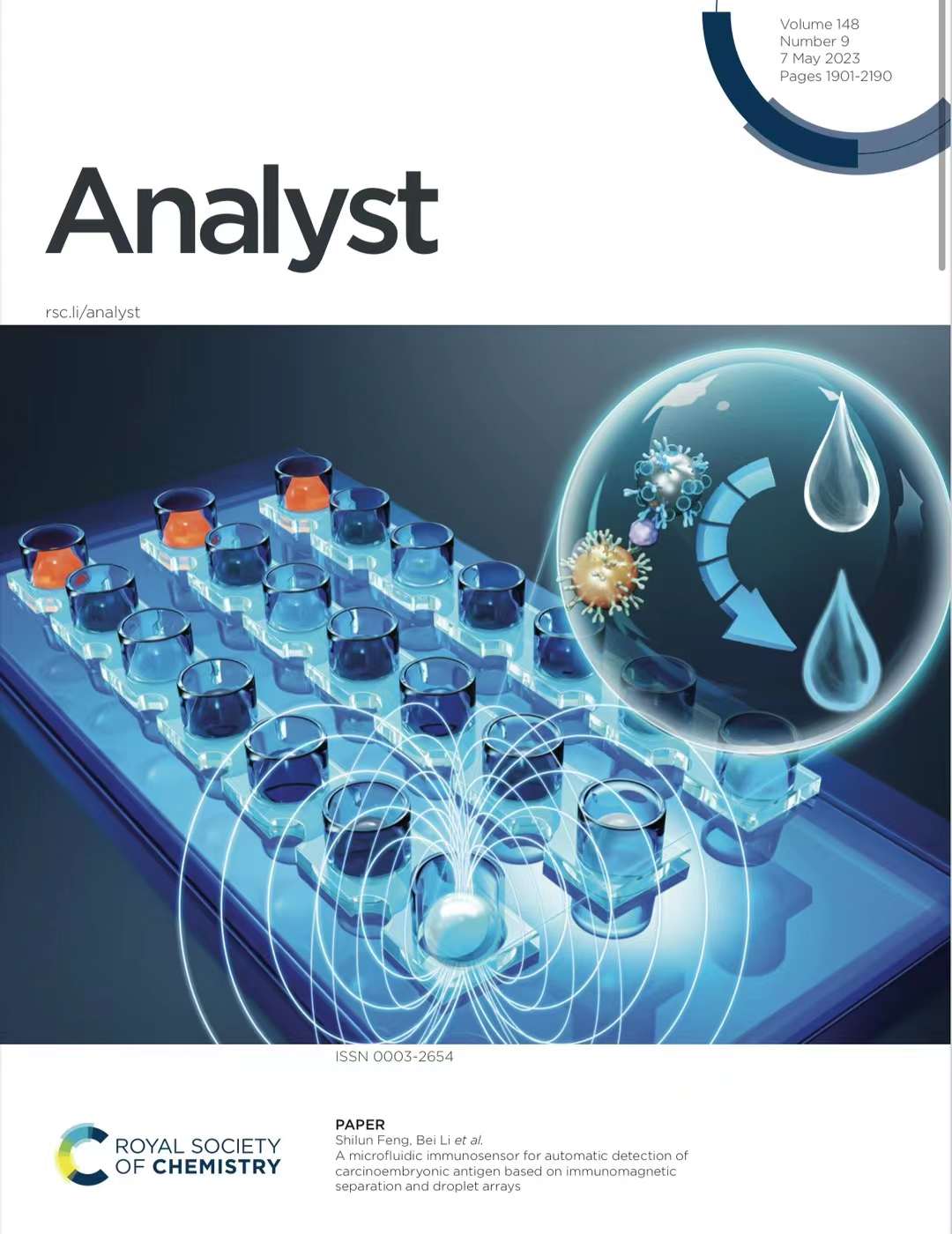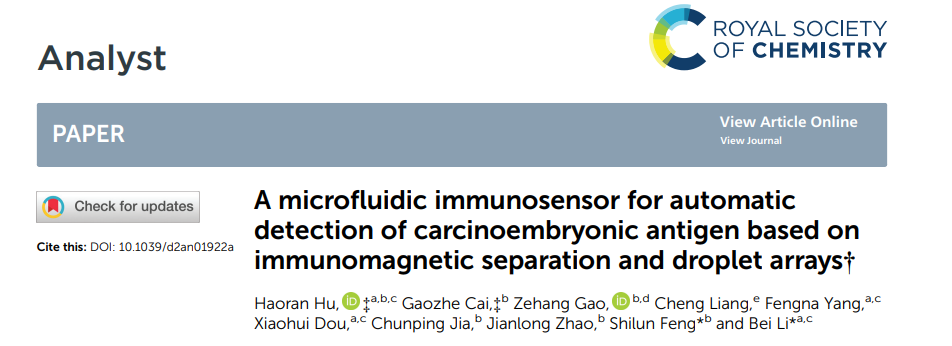

- Application Article
- Download
Hooke College

- About Us
- Team
- R & D and production
- Join Us
- Contact Us
- Qualification honor



On March 14, 2023, the research team led by Li Bei from the Changchun Institute of Optics and Mechanics, Chinese Academy of Sciences, and the team led by Feng Shilun from the Shanghai Institute of Microsystems and Information Technology, Chinese Academy of Sciences, collaborated to publish a cover article titled "A microfluidic immunosensor for automatic detection of carbonoembryonic antigen based on infrared separation and drop array" in the journal Analyst. In this research work, the research teams of the two parties mentioned above have conducted in-depth cooperation based on their own advantages, combining microfluidic technology with biosensor technology, developing and designing new microfluidic biosensors, and developing corresponding supporting equipment for biomolecular detection.

Volume 148 Number 9

Pages 1901-2190
Diagnosis of cancer by biomarkers plays an important role in human health and life. However, current laboratory techniques for detecting cancer biomarkers still require laborious and time-consuming operation by skilled operators and associated laboratory instruments. This work presents a colorimetric biosensor for the rapid and sensitive detection of carcinoembryonic antigen (CEA) based on an automated immunomagnetic separation platform and a droplet array microfluidic chip with the aid of an image analysis system. Immunomagnetic nanoparticles (MNPs) were used to capture CEA in the samples. CEA-detecting antibodies and horseradish peroxidase (HRP) were modified on polystyrene microspheres (PS), catalysing hydrogen peroxide and 3,3′,5,5′-tetramethylbenzidine (TMB) as signal outputs. Color reaction data were analyzed to establish a CEA concentration standard curve. The movement of MNPs between droplets in the microfluidic chip is achieved using an automatically programmable magnetic control system. This colorimetric biosensor has been used for the simultaneous detection of six CEA samples ranging from 100 pg mL?1 to 100 ng mL?1 with a detection limit of 14.347 pg mL?1 in 10 min, following the linear equation: y = ?4.773?ln(x) + 156.26 with a correlation of R2 = 0.9924, and the entire workflow can be completed within 80 minutes. The microfluidic immunosensor designed in this paper has the advantages of low cost, automation, low sample consumption, high throughput, and promising applications in biochemistry.
The paper links:
https://doi.org/10.1039/D2AN01922A

+86-431-81077008

Building 3, Photoelectric Information Industrial Park, No.7691 Ziyou Road, Changchun, Jilin, P.R.C

marketing@hooke-instruments.com

COPYRIGHT©2022 HOOKE INSTRUMENTS LTD.ALL RIGHTS RESERVED 吉ICP备18001354号-1